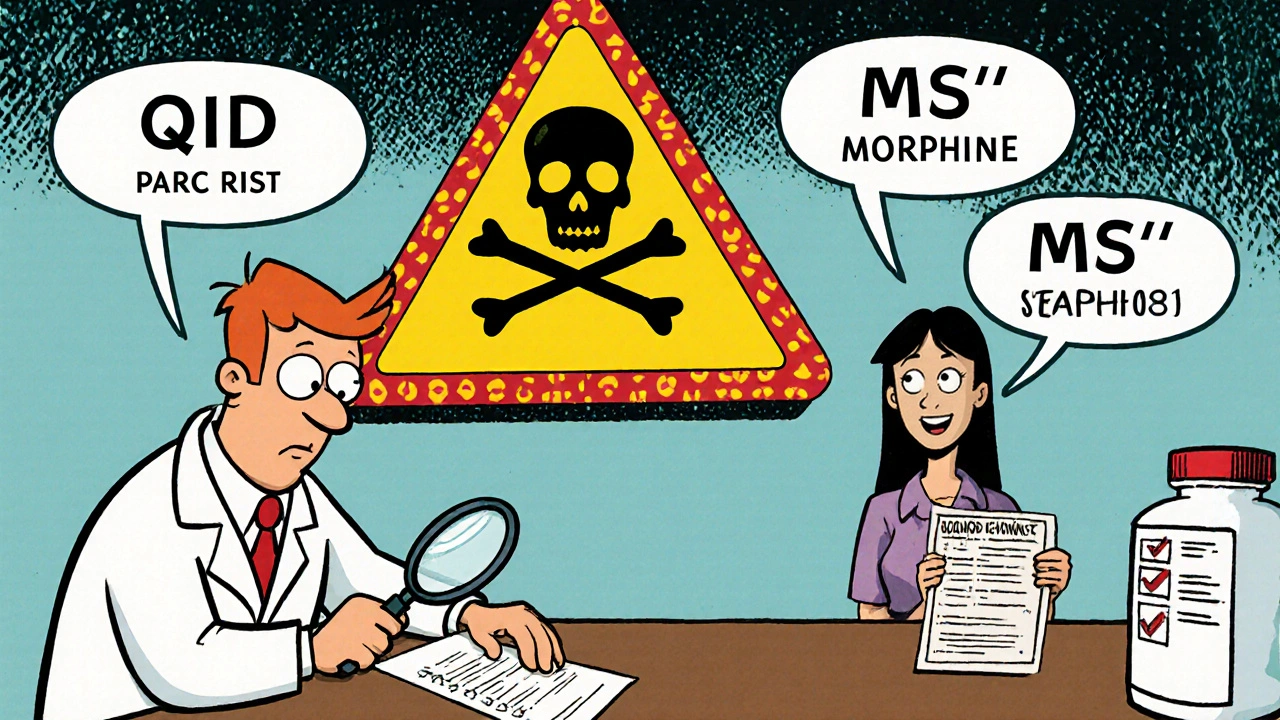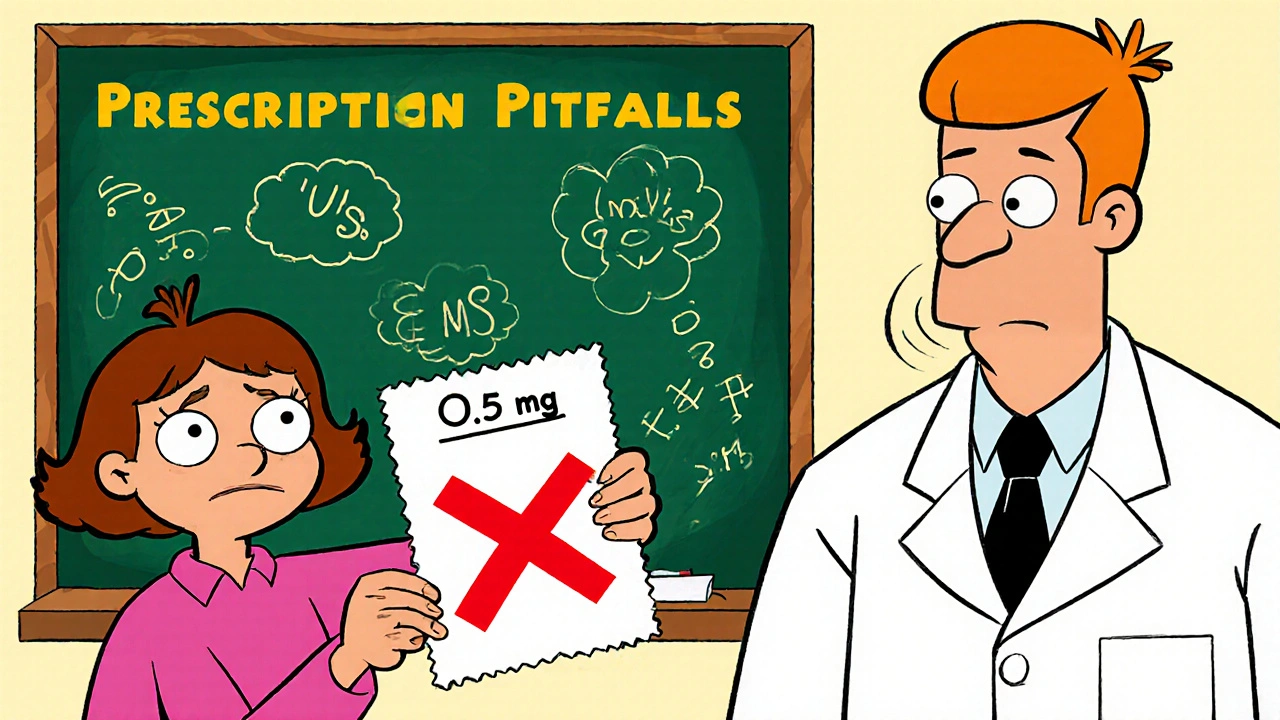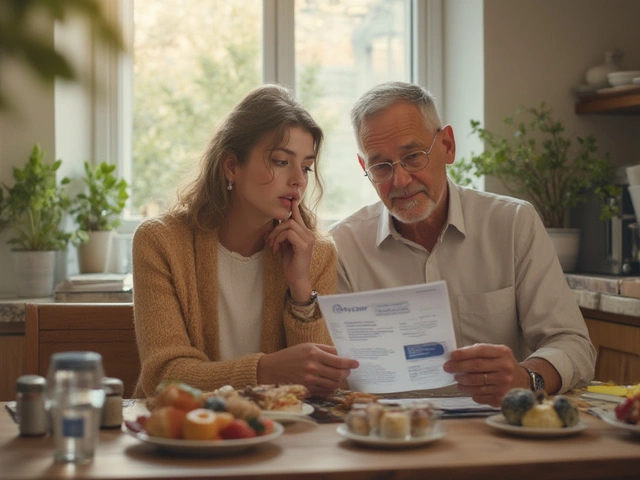Every year, over 1.5 million people in the U.S. are harmed by medication errors-many of them starting with a simple mistake on a prescription pad or in an electronic system. You might think these errors only happen to someone else, but the truth is, they can happen to anyone. A doctor writes a prescription, the pharmacy fills it, and you take it without a second thought. But what if the dose was wrong? What if the drug name was misread? What if the instructions said take it once a day when it was meant to be four times? These aren’t rare accidents. They’re preventable-and you have more power to stop them than you realize.
What Exactly Counts as a Prescription Error?
A prescription error isn’t just a typo. It’s any mistake made when a provider writes or enters your medication order. This includes the wrong drug, the wrong dose, the wrong instructions, or even missing critical information like why you’re taking it. According to data from the National Coordinating Council for Medication Error Reporting and Prevention, these errors happen before the medicine even reaches your hands. And they’re not just annoying-they’re dangerous.The most common types include:
- Wrong dosage (19% of all errors): Too much or too little. A decimal point error like writing .5 mg instead of 5 mg can turn a safe dose into a deadly one.
- Illegible handwriting (22%): Even today, some providers still write by hand. A sloppy “U” for units can be mistaken for a “0,” leading to a 10x overdose.
- Wrong drug name (7%): Drugs like Celebrex and Celexa look and sound alike. One treats arthritis, the other depression. Mix them up, and you’re in trouble.
- Bad abbreviations: “QD” (once daily) can be read as “QID” (four times daily). “MS” can mean morphine sulfate or magnesium sulfate-two completely different drugs with wildly different risks.
- Missing purpose: If your prescription doesn’t say why you’re taking it (e.g., “for high blood pressure”), you have no way to spot if it’s the wrong drug.
High-alert medications like insulin, blood thinners, and opioids are especially risky. They make up just 8% of prescriptions but cause 72% of fatal errors. A single mistake here can kill you.
Why Do These Errors Happen?
It’s not because doctors are careless. Most are overworked, rushed, and drowning in paperwork. A 2021 study found physicians spend just 17 seconds per prescription in busy clinics. That’s less time than it takes to brew a cup of coffee. When you’re juggling 30 patients a day, it’s easy to click the wrong option in an electronic system or skip checking a drug interaction.Electronic prescribing was supposed to fix this. And it did-for handwriting errors. But it created new ones. Dropdown menus list drugs in alphabetical order. If you’re looking for lamotrigine (a seizure drug), you might accidentally pick Lamictal (the brand name), which looks the same on screen. Or you might select “50 mg” instead of “5 mg” because the numbers are too close together.
Pharmacists now spend nearly 19 minutes per prescription just verifying what the doctor wrote. That’s up from 6 minutes in 2015. And 41% of that time is spent fixing errors that came from the prescriber-not the pharmacy.
How to Catch Errors Before You Take the Medicine
You don’t need to be a doctor to spot a problem. You just need to know what to look for. Here’s a simple checklist you can use every time you get a new prescription:- Check the drug name: Is it spelled out fully? No abbreviations like “HCTZ” for hydrochlorothiazide. It should say the full generic name or brand name clearly.
- Look at the dose: Does it include a leading zero? “0.5 mg” is correct. “.5 mg” is dangerous-it can be read as “5 mg.” Does it have a trailing zero? “5.0 mg” is risky-it can be read as “50 mg.”
- Read the instructions: Avoid anything like “QD,” “BID,” or “TID.” These are outdated abbreviations. It should say “once daily,” “twice daily,” etc.
- Confirm the quantity: If you’re prescribed 30 pills for a 7-day course, that doesn’t add up. Ask why.
- Find the purpose: Is it written? “For pain,” “for high cholesterol,” “for anxiety.” If it’s missing, ask the provider to add it.
- Check the prescriber’s info: Is there a phone number? If not, how will the pharmacy call them if something’s wrong?
- Look for expiration: Most prescriptions expire in a year. If yours says “expired” or has no date, ask for clarification.
Use this checklist the moment you get your prescription-even before you leave the office. If you’re handed an electronic copy, print it out and review it the same way.
Use the Teach-Back Method
Don’t just nod and walk away. When the doctor or nurse explains how to take your medicine, repeat it back in your own words. This is called the “teach-back” method-and it’s one of the most effective tools in patient safety.For example, if they say, “Take one tablet twice a day with food,” you say: “So I take one pill in the morning and one in the evening, right after I eat?”
Studies from Johns Hopkins show this cuts misunderstandings by 81%. It also gives the provider a chance to correct themselves before you leave. And if they get annoyed? That’s a red flag. Good providers welcome questions.

Know Your High-Risk Drugs
Some medications are more dangerous than others. If you’re taking insulin, warfarin, heparin, or opioids, you need to be extra careful. The Institute for Safe Medication Practices keeps a list of “error-prone drug pairs.” For example:- Hydrocortisone (HC) vs. Heparin (H): One is a steroid cream, the other is a blood thinner. Mix them up, and you could bleed internally.
- Insulin glargine vs. Insulin lispro: One lasts 24 hours, the other works fast. Confusing them can cause severe low blood sugar.
- Zyprexa vs. Zyrtec: One treats schizophrenia, the other treats allergies.
Keep this list handy. If your prescription is for one of these drugs, double-check the name with your pharmacist. Ask: “Is this the right one for my condition?”
Use Technology to Your Advantage
There are apps now that can help. Apps like MedSafety let you take a photo of your prescription. The app scans it and flags things like missing zeros, dangerous abbreviations, or mismatched doses. In a 2023 pilot study, patients using this tool caught 68% more errors than those who didn’t.Some hospitals and insurers now send automated SMS alerts when a prescription is sent to your pharmacy. The message includes the drug name, dose, and frequency. If it doesn’t match what your doctor told you, you can call right away. A 2023 study in the New England Journal of Medicine found this simple step boosted error detection from 29% to 74%.
And if you’re on Medicare, your prescription is required to be electronic. That’s good-but don’t assume it’s perfect. Providers still bypass safety alerts in e-prescribing systems. One study found 31% of doctors ignore warnings about drug interactions. You’re the last line of defense.
Ask the Three Key Questions
The National Patient Safety Foundation recommends asking these three questions every time you get a new medication:- What is my main problem? (Why am I taking this?)
- What do I need to do? (How and when do I take it?)
- Why is it important? (What happens if I don’t take it-or if I take it wrong?)
A 2021 study in JAMA Network Open showed patients who asked all three questions reduced their risk of medication errors by 44%. It’s not about being difficult. It’s about being smart.
What If You Find a Mistake?
Don’t panic. Don’t stop taking the medicine unless you’re told to. Call your doctor’s office or pharmacy immediately. Say: “I reviewed my prescription and noticed something that doesn’t match what we discussed. Can you please confirm this is correct?”Most providers will thank you. In fact, many hospitals now have formal programs where patients are encouraged to report errors. One program in 37 states trains volunteers to help elderly patients check their prescriptions. In its first year, it caught over 8,200 dangerous errors.
If your pharmacist says, “Oh, that’s a common mistake,” don’t accept that. Ask: “Who made the mistake? Can it be fixed before I leave?”
What About People With Low Health Literacy?
About one in three adults in the U.S. struggles to understand medical information. For them, spotting errors is even harder. That’s why family members, caregivers, and community health workers need to step in. If you’re helping someone older or with cognitive challenges, review their prescriptions with them. Use simple language. Draw pictures. Read the instructions out loud. Don’t assume they understand just because they nod.Technology can help here too. Many apps now offer voice-readout options and pictograms showing how to take pills. The FDA is rolling out new labeling with icons for common instructions like “take with food” or “avoid alcohol.” These will be required on all new drugs by 2025.
The Future Is in Your Hands
By 2027, experts predict patient-led error detection will become standard. New systems will require you to confirm your prescription details before the pharmacy dispenses it. Some hospitals are already testing blockchain records that show exactly what the doctor ordered versus what was given to you. You’ll be able to see it all on your phone.But you don’t need to wait for the future to act. Right now, you can protect yourself. Every time you get a prescription, pause. Look. Ask. Verify. You’re not just a patient-you’re a partner in your own safety. And that’s the most powerful tool you have.




